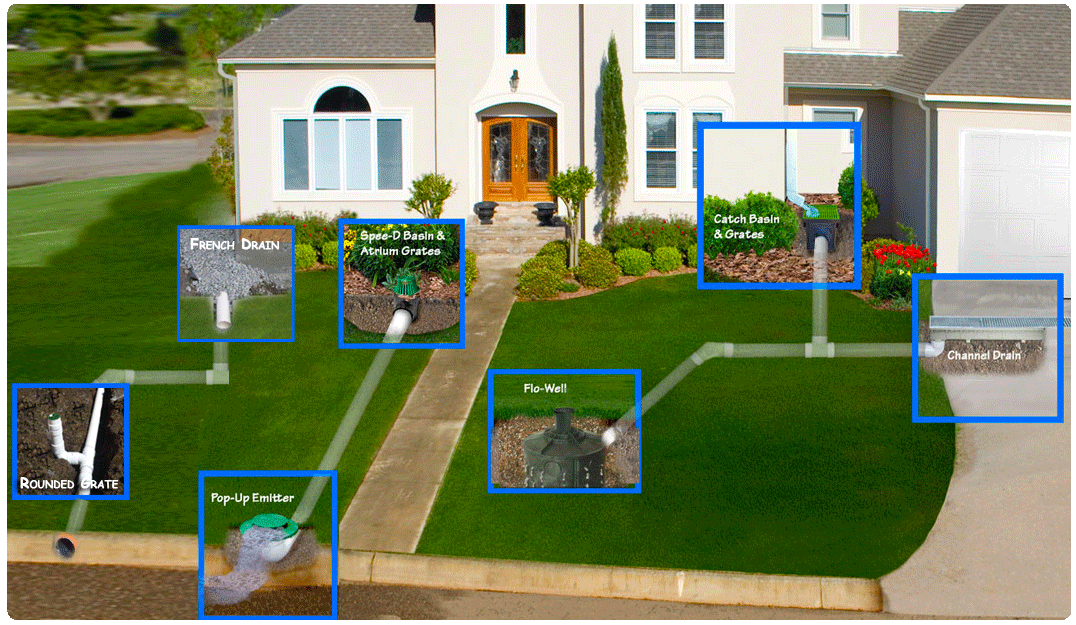Point 10
Water Drainage: The Unsung Hero of Home Maintenance
Ensuring Effective Gutters, Downspouts, and Drainage Systems for Longevity and Health of Your Property
When it comes to home inspections, water drainage systems often get overshadowed by more flashy concerns like kitchen appliances or HVAC systems. However, effective water drainage is crucial for the structural integrity and long-term health of your home. Problems with gutters, downspouts, and the overall drainage system can lead to water accumulation around the foundation, basement flooding, and even soil erosion. Our inspections cover these aspects in detail to ensure that your home is free from water-related issues that can become expensive headaches down the line.
The Importance of Effective Water Drainage: A Deep Dive
How Gutters, Downspouts, and Proper Drainage Save Your Home from Expensive Repairs
Water drainage might not be the most glamorous aspect of homeownership, but its importance can’t be overstated. From preventing structural damage to avoiding mold growth, effective water drainage systems play a pivotal role in maintaining the health and longevity of your home. Below are key elements worth considering:
Gutters
Gutters catch the rainwater that flows off your roof and channel it away from your home. Poorly maintained gutters—filled with leaves, debris, or even nesting animals—can lead to water overflow, damaging your roof, siding, and foundation. During the inspection, the condition and placement of gutters are assessed to ensure they are up to the task.
Downspouts
Downspouts work in conjunction with gutters, guiding the collected water away from your home. Their placement and condition are critical. If downspouts are too short or lead water towards the foundation, you risk flooding your basement and compromising the structural integrity of your home.
Drainage Slope
The ground around your home should slope away from the foundation to encourage water to drain away naturally. Poorly graded landscapes can cause water to accumulate around the foundation, creating an ideal environment for mold growth and foundation damage. Your inspector will assess the drainage slope during the inspection.
French Drains and Catch Basins
In some cases, additional drainage solutions like French drains and catch basins might be recommended. French drains are installed underground and direct water away from an area, while catch basins collect water and divert it into a drainage system. Both solutions are highly effective but can be expensive to install.
Drainage Pipes
Hidden from sight but critical for proper drainage are underground drainage pipes. These pipes are typically connected to downspouts and may also link to other drainage solutions like French drains. It’s important to ensure these pipes are clear of blockages and are correctly sloped to allow water to flow away from the home.
Signs of Drainage Problems
During a home inspection, there are various signs your inspector will look for that indicate drainage issues, such as water stains on walls, mildew in the attic, or dampness in the basement. Even minor red flags can be a sign of bigger underlying problems that should be addressed immediately.
Seasonal Maintenance
Effective drainage is not a one-time installation but requires regular maintenance. Gutters should be cleaned at least twice a year, and downspouts should be checked for blockages. Any shifts in landscape grading should be corrected as soon as possible.
Conclusion
Water drainage is one of the most undervalued aspects of a home, yet it has significant repercussions on the building’s durability and your quality of life. Failing to properly manage water can lead to a host of problems, from cosmetic issues like water stains to severe structural damage. A comprehensive inspection of your home’s water drainage system can save you from future troubles and expenses, making it an indispensable component of responsible homeownership.



